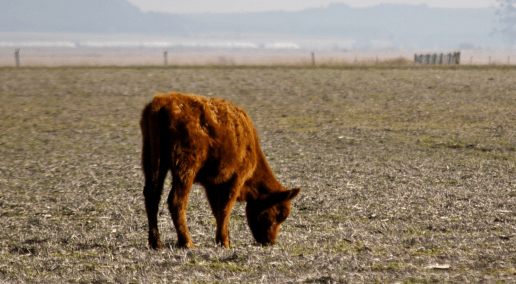During the Canadian Forage and Grassland Association’s (CFGA) 2022 conference session, Money Risk Management on Cattle Land, Ryder Lee from Canadian Cattle Association (CAA) presented a high-level overview of the current challenges (risk management-wise) for retaining grassland and forage acres.
Farmers face the following risks:
- Human resource
- Disease
- Market
- Weather
Human resource risks
Human resource risks are not discussed much. Farmers need to ask themselves: can I handle someone getting hurt or diagnosed? Think about what happens if you get sick during seeding or calving. Cliché farm accidents are too common so it is important to listen to that voice in your head saying “bad idea."
Disease risks
Some examples of diseases livestock can develop are clubroot and bovine viral diarrhea (BVD) in cattle and avian flu in poultry. There are many steps farmers can take to manage disease risk.
Market risks
Market risks have a variety of factors. Border closures, market access, politics and trade exports can all affect the market. These factors can impact prices right away such as was the case when the Vancouver port and cargo supply chains backed up.
Global cattle prices vary by time frame. The timing of slaughter affects price and land. Cattle don’t have the flexibility of being stored like grain, so the marketing window is small. The tools are big and farmers have to hedge live cattle, retain ownership and sometimes sell early.
Price insurance is available but is expensive. The government doesn’t help as they do with grain insurance, so the producer has to pay the whole premium. Cost-sharing premiums for livestock producers are needed to help make programs accessible.
Production insurance is for when yield is lower than expected. Price insurance is for when the average price paid is lower than the coverage level. Forage insurance is meant to replace input costs. Farmers need price insurance for marketing, otherwise, costs can impact land management.
Weather risks
Weather causes a variety of risks. There are risks when there is too much rain or not enough rain and risks if frost or snow occurs during the off-season. Livestock farmers can address the risks for weather and livestock by downsizing the herd and monitoring feed use and land grazing.
Conference 2023
The CFGA is excited to announce that its 14th annual conference will take place Nov. 28 to Dec. 1 in person in Harrison Hot Springs, BC. This year’s conference theme is Forage Resilience in a Changing Landscape: Manage risk. Overcome challenges. Discover opportunities and we look forward to delivering the interesting and informative sessions the CFGA conference is known for. Please save the date to join us as we learn about issues facing the forage sector and how they overcome these challenges, as well as take a look ahead to opportunities. Watch the CFGA conference website for more information.
Back to Admin



Leave a Comment